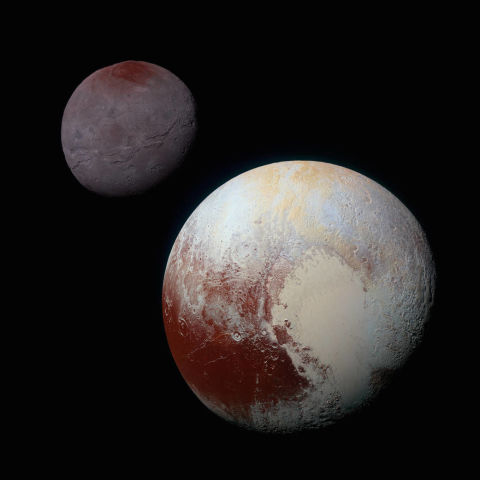
On July 14, 2015, the New Horizons spacecraft captured the world’s attention with the photograph above—an instantly iconic image of the Tombaugh Regio, or as it has become more commonly known, Pluto’s heart.
Just after transmitting this photo back to Earth, New Horizons went into flyby mode and stopped communicating with Earth briefly while it sucked up some 50 gigabits, or 6.25 gigabytes, of data. As it flew within 7,800 miles of the dwarf planet, the spacecraft’s seven science instruments took photographs, generated thermal maps, took ultraviolet observations and temperature readings of the atmosphere, and measured solar wind and plasma ions around the Pluto system.
Fifteen months later, and we have finally received all that data on Earth. “We have our pot of gold,” said Mission Operations Manager Alice Bowman in a press release.
If you were on Google Fiber, it would take less than one minute to download all the data New Horizons gathered during the Pluto flyby. But things are a little more complicated when a spacecraft is 3.1 billion miles away and it takes more than five hours for data to get here. With all its science instruments switched off, New Horizons can transmit data back to Earth at 1,000 to 4,000 bits per second. That would get all 50,000,000,000 bits of data back to Earth in roughly 150 days if the spacecraft could transmit data constantly.
But it can’t. New Horizons’ antenna needs to be pointed at a receiver here on Earth—the Deep Space Network—and because the Earth is spinning, the spacecraft has limited windows during which it can transmit. As a result, it can send about 173 megabits each day. Factor in the fact that the New Horizons team needs to share the Deep Space Network with other missions, and they occasionally need to stop transmitting data to fire up the other instruments and steer the craft, and it took more than a year and three months to get all the data back.
“There’s a great deal of work ahead for us to understand the 400-plus scientific observations that have all been sent to Earth,” says New Horizons principal investigator Alan Stern. “And that’s exactly what we’re going to do—after all, who knows when the next data from a spacecraft visiting Pluto will be sent?”





